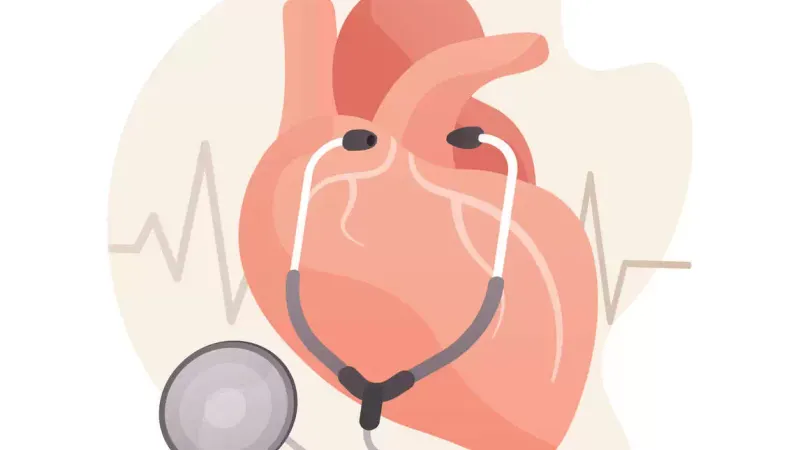

Our Review Process
Our articles undergo extensive medical review by board-certified practitioners to confirm that all factual inferences with respect to medical conditions, symptoms, treatments, and protocols are legitimate, canonical, and adhere to current guidelines and the latest discoveries. Read more.
Our Editorial Team
Shifa Fatima, MSc.
Author
Dr. Apoorva T, MHM.
MEDICAL ADVISOR
How Much Cholesterol Should I Have Per Day for Good health?
Most of your health and well-being are in your hands. You can focus on and ensure that you are engaging in active and healthy practices so that you can enjoy a life that is not crippled by medical complications, especially in the later stages. This is important because when you are wracked by health issues, you may also have to deal with several restrictions and limitations later. This can burden you even more at an older age.
Many aspects and factors come into play when you are trying to make sure that you are leading a healthy life. One such factor is the cholesterol level in the body. While cholesterol is not all bad, as it performs several important functions that can make the body work well, the overproduction of cholesterol can lead to problems. Cholesterol is a waxy, fat-like substance made from the liver. Other sources of cholesterol in the body are in the form of foods like meat and poultry. Since your liver already has the job to produce cholesterol, you will have to make sure that you are taking in a limited amount of high-cholesterol foods. This is why healthcare professionals release guidelines based on which people can actively check the consumption of these unhealthy substances and control their intake.
Table of Contents
Important guidelines
The answer to how much cholesterol per day is safe has been studied by many large-scale healthcare institutes in the world. The United States Department of Agriculture (USDA), suggests that people should follow the daily recommendations regarding cholesterol and fat intake provided by the Dietary Guidelines for Americans. They have made certain recommendations based on their findings from multiple studies and research projects. They suggest that:
- People should ensure that their overall consumption of saturated fats should contribute less than 10% of the total calories in a day.
- Avoiding all trans fats should be a mantra that will help people in the long run as they are highly harmful.
- Whenever possible, people should attempt to replace all saturated fats with unsaturated fats so that they consume the healthier version of the food. Some other suggestions that they laid out for the general public regarding certain specific food groups that would result in the elevation of cholesterol were:
- Cholesterol – Try to consume as little dietary cholesterol as possible. No specific limits were provided, however, caution needs to be maintained
- Saturated fats – only 10% of the calories consumed per day should be from this type of fats
- Trans fats – Since they are associated with inflammation, they should be avoided as far as possible.
Symptoms of high cholesterol
Controlling how much cholesterol a day you are consuming is important as you may have no idea that you may be living with higher levels of cholesterol in the body. High cholesterol often comes with no apparent or obvious signs or symptoms. It directly leads to a major issue that can be fatal – heart attacks or strokes. Doctors recommend getting cholesterol tests done regularly so that you can be aware of your numbers and take action as and when needed.
Why is it important to know your cholesterol numbers?
The belief that “ignorance is bliss” is not applicable when it comes to medicine. There is a strong reason why doctors recommend that regular testing needs to be conducted so that people are aware of their health conditions and take actions when needed, or even proactively. Knowing your cholesterol numbers is also significantly important for the same reason as it can help you take the required steps. The prime reason for cholesterol tests to know the readings even without a history would be to avoid heart diseases. Because cholesterol is known to cause plaque build-up in the interior arterial walls, it can restrict the seamless flow of blood to different organs.
Plaque build-up or atherosclerosis can result in serious problems:
1. Coronary artery disease – blood flow to the heart is blocked
2. Peripheral artery disease – blood flow to the legs and arms is restricted
3. Carotid artery disease – blood flow to the brain is blocked.
Cholesterol travels through the blood silently, which means that it can cause complications without any outward signs or symptoms. You may not see and notice the progress of plaque build-up and there may be no symptoms until a heart attack or stroke. A person may be living with high cholesterol levels for years and may not know it – that is why regular testing to know the number is recommended. Catching it early can give you a fighting chance against fatal issues.

Cholesterol Levels Chart
Cholesterol levels are an indicator of how much cholesterol is present and circulating in the blood. Different types of cholesterol are present in the body and they have varying functions. The HDL or “good” cholesterol is responsible for carrying the bad cholesterol to the liver for disposal. These numbers should ideally be high (above 60). The LDL or “bad” cholesterol is the one that should be low (below 100). The total cholesterol score should be below 200.
| LDL cholesterol level | Category |
|---|---|
| Less than 100 mg/dL | Recommended |
| 100-129 mg/dL | Slightly above recommended |
| 130-159 mg/dL | Borderline high |
| 160-189 mg/dL | High |
| 190 mg/dL and above | Very high |
Which test measures Cholesterol levels
The healthcare professionals you are visiting will order a blood test – the lipid profile to assess the level of cholesterol in the body. This is a simple blood test wherein blood will be drawn from a vein in your arm and sent to the lab for analysis. You will have to fast for 9-10 hours before this test is conducted and avoid the consumption of alcohol for at least 24-48 hours. The lipid panel will provide the following information:
- Total cholesterol – The total amount of cholesterol that is circulating in the blood. HDL + LDL + 20% triglycerides = total cholesterol
- HDL – The good cholesterol in the blood as it helps clear out the arteries
- LDL – Low-density lipoprotein or bad cholesterol as it blocks the arterial walls with plaque
- VLDL – Very low-density lipoprotein – bad cholesterol as they carry a type of fat in the blood
- Triglycerides – This is a type of fat but too much of it can cause atherosclerosis.
- Non-HDL – This is all cholesterol in the blood that isn’t HDL (total cholesterol – HDL = non-HDL)
- Ratio between total cholesterol and HDL – This is the total cholesterol reading divided by HDL. The number should be below 5
Normal cholesterol levels by age chart
How much cholesterol per day you consume will be reflected in the charts. Being aware of what the normal level of cholesterol is based on your age would be important as you know the target you are hoping to achieve. In case you have heart disease or any other risk factors, the levels may be slightly different. Your healthcare provider might ideally want your LDL levels to be below 70 mg/dl.
| Age | Total cholesterol | Non-HDL cholesterol | LDL cholesterol | HDL cholesterol |
|---|---|---|---|---|
| 19 and younger | Below 170 mg/dl | Below 120 mg/dl | Below 110 mg/dl | Above 45 mg/dl |
| 20 and older | 125-200 mg/dl | Below 130 mg/dl | Below 100 mg/dl | Males – above 40 mg/dl Females – above 50 mg/dl |
Remember that the values of HDL should be high and LDL should be low. Since HDL is a helpful cholesterol, a value above 60 offers your protection against heart disease.
High cholesterol levels by age chart
High cholesterol is often more than 200 mg/dl. However, certain categories like borderline or near-optimal can help break down the results. You may be able to manage these symptoms by yourself if your numbers are closer to the normal range.
Here is the high cholesterol chart based on age:
| Age | Total cholesterol | Non-HDL cholesterol | LDL cholesterol |
|---|---|---|---|
| 19 and younger | Borderline High - 170 - 199 mg/dl | Borderline high - 120-144 mg/dl | Borderline high – 110-129 mg/dl |
| High – 200+mg/dl | High – 145+ mg/dl | High – 130+ mg/dl | |
| Age | Total Cholesterol | Non-HDL cholesterol | LDL cholesterol |
| 20 and older | Borderline High – 200-239 mg/dl | Near optimal – 100-129 mg/dl | |
| High – 240+mg/dl | High – 145+ mg/dl | Borderline high – 130-159 mg/dl | |
| High – 160-189 mg/dl | |||
| Very high – 190+ mg/dl |
How often should I get my cholesterol checked?
Your doctors and a team of healthcare professionals will be the right people to tell you how often to get these levels tested. Here are some factors that this may depend on:
- Age – With age, the frequency of testing will increase
- Family history – If you have a close family member with a history of high cholesterol levels, you may face the risk too, here, the testing duration will lessen.
- Risk factors – If you have been diagnosed with certain risk factors that take you closer to heart disease, you may need to get tested often.
- Sex assigned at birth – People assigned male at birth should start getting tested at a much younger age as compared to people assigned female at birth
As per the guidelines, it is suggested that children and teenagers around the age of 19 or below should get their first tests around the age of 9-11. Every 5 years, these tests should be repeated. In case of these risk factors, doctors may suggest opting for more frequent testing for certain people
| Testing frequency for people assigned male at birth | |
|---|---|
| 20-44 years | Every 5 years |
| 45-65 | Every 1-2 years |
| 65+ | Every year |
Amount of cholesterol present in different kinds of foods
For people with a risk of heart disease, how much cholesterol per day should be limited to 200 mg. Here is how much cholesterol is present in the common foods that we consume every day
| Dairy products | Portion | Cholesterol (mg) | Total fat (g) | Saturated fat (g) | |
|---|---|---|---|---|---|
| Milk (non-fat) | 1 cup | 4 | 0 | 0 | |
| Milk (low-fat) | 1 cup | 10 | 3 | 2 | |
| Milk (whole) | 1 cup | 33 | 8 | 5 | |
| Yogurt (non-fat) | 1 cup | 10 | 0 | 0 | |
| Yogurt (whole) | 1 cup | 29 | 7 | 5 | |
| Cheddar Cheese | 1 oz | 30 | 9 | 6 | |
| Cottage Cheese (low-fat) | 1 cup | 10 | 2 | 2 | |
| Fats | Portion | Cholesterol (mg) | Total fat (g) | Saturated fat (g) | |
| Butter | 1 tsp | 11 | 4 | 3 | |
| Margarine | 1 tsp | 0 | 4 | 1 | |
| Vegetable Oils | 1 tsp | 0 | 5 | 1 - 2 | |
| Meats and protein | Portion | Cholesterol (mg) | Total fat (g) | Saturated fat (g) | |
| Tofu | 1/2 cup | 0 | 11 | 2 | |
| Chicken (no skin) | 3 ½ oz | 85 | 5 | 1 | |
| Egg | 1 | 212 | 5 | 2 | |
| Pork (chop) | 3 ½ oz | 85 | 25 | 10 | |
| Salmon | 3 ½ oz | 63 | 12 | 2 | |
| Oysters | 3 ½ oz | 55 | 2 | 1 | |
| Crab | 3 ½ oz | 52 | 1 | 0 | |
| Lobster | 3 ½ oz | 71 | 1 | 0 | |
| Tuna (in water) | 3 ½ oz | 30 | 1 | 0 | |
| Shrimp | 3 ½ oz | 194 | 1 | 0 | |
| Ham | 3 ½ oz | 53 | 6 | 2 | |
| Pork (tenderloin) | 3 ½ oz | 79 | 6 | 2 |
How to improve cholesterol levels
Improving cholesterol levels is a task that needs to be followed throughout life. Here are some of the common things that you need to add to your routine:
1. Exercise more
2. Avoid smoking
3. Lose weight if possible and needed
4. Learn about foods and the different types of cholesterol in each food
5. Follow a healthy diet
6. Manage symptoms of high blood pressure and high blood sugar
7. Deal with stress well
8. Take your medications on time.
Foods to eat and avoid to maintain healthy cholesterol levels
The major source of external cholesterol in your body will be in the form of foods. Therefore, how much cholesterol per day one should consume will help them restrict their diet as much as necessary. Certain foods that are high in saturated and trans fats and will lead to higher levels of cholesterol in the blood are:
Animal products – beef, pork, poultry, fish, milk, butter, egg yolks, cheese, etc. Eat them in moderation – you may not have to avoid them altogether
Avoid – processed meats like bacon, pizza, ice cream, baked goods, fried foods, red meat, cheese, etc
Foods to eat
Some foods that will help you manage and lower your cholesterol levels would be – oats, barley, beans, eggplant, nuts, fruits, etc. These will also not have a high fat intake and would, therefore, be okay to consume. Replace the unhealthy fats with unsaturated ones as they are less likely to harm your body and may not increase the overall cholesterol level. In case you are buying packaged foods, read the labels carefully.
Cholesterol-free foods (Healthy Alternatives)
A wide variety of foods do not contain any kind of cholesterol or unhealthy fats. They do not even have added sugars that can cause any harm to the person. Such cholesterol-free foods include - fruits, vegetables, whole grains (oats, quinoa, brown rice), nuts (not salted), etc. One alternative would be veganism where the only form of cholesterol would be produced by the liver.
What is the recommended daily cholesterol intake?
Many doctors do follow different opinions on how much cholesterol per day a person should consume. Dietary guidelines that many doctors follow suggest that you should consume no more than 300mg of dietary cholesterol in a d day. The number reduces to 200mg in case you are at risk for heart disease. These guidelines keep undergoing certain revisions based on situational factors. Currently, doctors follow no specific limit to the amount of cholesterol you need to consume. However, they still recommend that a person exercises caution so that they can keep their overall cholesterol levels at a healthy range.
Limitations these days are not based on the amount of cholesterol but the overall amount of consumption of saturated fats, trans fats, and added sugar in the diet. Dietary cholesterol may not be the cause of harm, however, the actual problem would be the amount of saturated and trans fats that people consume. These can cause the liver to produce excessive LDL cholesterol that can clog the arteries. 10% of calories should come from saturated fats. For example, if someone consumes 2000 calories in a day, 200 calories (22 grams) should come from saturated fats. The lesser, the better. Added sugars in the diet also hurt overall cholesterol levels. No more than 6 teaspoons (100 calories) for women and 9 teaspoons (150 calories for men) should be allowed.
Bottomline
Cholesterol levels need to be maintained and the best possible way to do so would be with the help of a controlled diet. Not adding trans fats, saturated fats, and sugar to the diet chart will be very helpful overall. Consuming more fruits, vegetables, fiber, and protein, is also advantageous as it can lead to no intake of excess cholesterol in the form of a diet. Know your levels, get tested regularly, and avoid the possible complications associated with high cholesterol in the body.
FAQs
1. Which food has the highest cholesterol?
Some foods with an extensively high levels of cholesterol would be – egg yolks, cheese, shrimp, organ meats (like chicken liver), fast food, and baked goods. These have high trans fats and saturated fats and can create a huge and lasting impact on the body and cholesterol levels.
2. How much cholesterol do I need to lower a day?
Your total intake of cholesterol in case of a higher risk for heart disease would be 200mg. In other people, approximately 300 mg of cholesterol should be good. AHA (American heart association) recommends that trans fats should not exceed over 5-6% of your total calorie intake. Keeping a check on this amount will be important.
3. What reduces cholesterol quickly?
If you want to reduce cholesterol quickly, you may have to engage in a combination of diet and exercise. Foods with omega-3 fatty acids like salmon, walnuts, flaxseeds, etc. Increasing the soluble fiber content in the diet would be beneficial like sprouts, kidney beans, apples, etc. Exercise can reduce cholesterol
4. How much cholesterol is normal?
In healthy individuals, total cholesterol levels below 200 mg/dl, LDL cholesterol levels below 130 mg/dl; and HDL cholesterol levels above 40 mg/dl (males) and above 50 mg/dl (females) are supposed to be good. These levels may vary per age and gender
5. What is a good breakfast if you have high cholesterol?
Some healthy breakfast options when a person has high cholesterol levels would be – oatmeal, almond milk, avocado toast, smoothies, etc. Increasing the level of fiber in the foods would be best in cases of higher cholesterol levels.
Disclaimer
This website's content is provided only for educational reasons and is not meant to be a replacement for professional medical advice. Due to individual differences, the reader should contact their physician to decide whether the material is applicable to their case.








